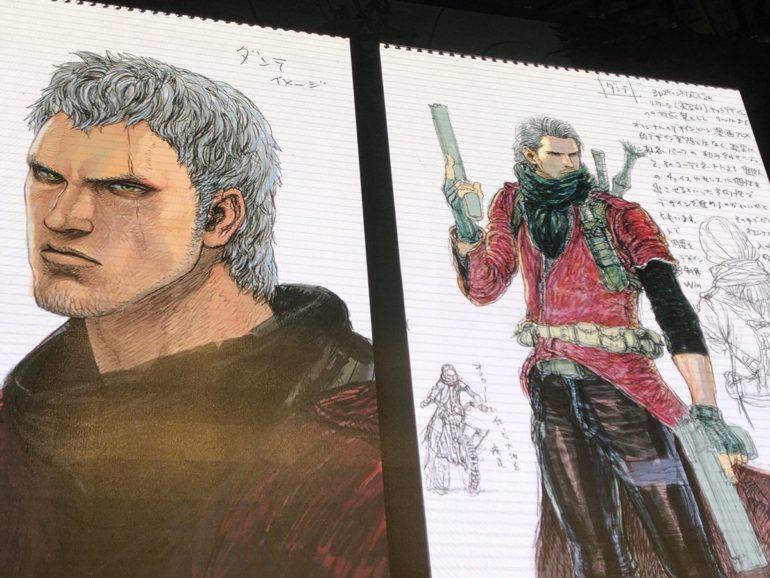Game Director Hideaki Itsuno Discusses Creating Emotional Moments in ‘Devil May Cry 5’
By Aron Garst
LOS ANGELES (Variety.com) –
Spoilers for “Devil May Cry 5” are included below.
With an ecstatic, Dante-like “let’s rock!’ Capcom legend Hideaki Itsuno began his dive into how he created the impactful story and gameplay of “.” The panel looked at Itsuno’s methodology of game design.
“How can you design something around a feeling you’ve experienced at some point in your life?” Itsuno said through translation by producer Matt Walker at GDC. “We’re talking about creating a feeling that will motivate the player to continue playing.”
He called that feeling the ‘objective’, or what you’re trying to evoke in the player, and the way to achieve that the ‘means’. “Don’t mix up means and objectives,” Itsuno said. “There is only one objective, but there are multiple means to achieve it. Create a list of means and prioritize them based on how hard it would be to implement them.”
Itsuno talked at length about the importance of having meaningful experiences in life and that those would give you objectives. For him that was running a marathon, having a special, expensive dinner, and watching shows he loved as a child. He went on to say that these memories can be used to influence emotional game design.
“When you feel something good, something powerful– remember that,” he said. “Before you go through with an experience, think about what you expect it to feel like. Once you’ve experienced it, reflect on whether your expectations differed from reality.”
“Treasure that analysis,” he added. “The difference is what you’ll be able to draw upon for your game design.”
He added that the emotions he felt after watching two Japanese animes, which he couldn’t name due to copyright issues (although they
could
be Gundam and Voltron), inspired pivotal moments in “Devil May Cry 5.” “There’s the most famous robot in anime at the time the show came out. This episode shows him getting the crap beat out of him,” he said. “His father, who’s been missing for some time, comes out of nowhere with a new robot that no one has ever seen before. It beats up the attackers in one fell swoop.”
“Itsuno was four at the time so he didn’t understand that it was all coordinated,” Walker added. “He just knew it inspired this huge feeling inside him.”
That moment lead to the pivotal climax of “Devil May Cry 5” where Nero dives between Dante and Virgil as they clash in a huge fight. Nero shatters is Devil Breaker and unlocks a new power inside him– his own Devil Trigger– transforming him into a far more powerful warrior.
For Itsuno, Dante was the famous robot getting attacked and Nero was the new, powerful robot that came to stop the fight. “Usually characters become fully powered around halfway through the game,” he said. “But we wanted Nero to achieve full power at the very end to have the audience be ‘Oh my god,what is this’.”
He summarized the moment with two concepts: setbacks and awakenings. Nero’s setbacks were him losing his devil bringer and getting obliterated by Urizen while his awakenings included getting his arm back with the Devil Trigger. “You know how we always said “Devil May Cry 5’s” themes were about photorealism and the uncanny valley? That was a lie,” Itsuno said jokingly. “The real themes centered around setbacks and awakenings.”
Itsuno also spoke about similar situations with “Devil May Cry 5’s” other playable characters, V and Dante, going through similar progressions with setbacks and awakenings. Dante’s included his early-game defeat by Urizen, where he almost dies, and his awakening being the birth of the Devil Sword Dante. V’s setbacks included the fact that he could not fight alone while his body continuously fell apart, his awakening was how his death brought on the return of Virgil.
“The existence of these setbacks make their awakening is so poignant,” he said. “You need to have a clear objective like that for every scene.”
Itsuno then went into detail about how they created satisfying gameplay. He said that the key to making players feel excited about playing included three points:
- You need to allow the player a method to figure out the trick to winning on their own.
- Give them the opportunity to brush up on their technique and get better.
- Encourage them not to give up on themselves.
Methods to achieve these included designing enemies with predictable behavior the player can read and establishing a healthy risk and reward for players who observe enemies before attacking. Both of these should be done while letting the player feel like they discovered the solution on their own. Brushing up on technique meant providing responsive controls and proper tutorials.
Itsuno’s design philosophy for creating tight action clearly worked, as the combat in “Devil May Cry 5” is some of the most superb mechanical design in the genre. “It’s about achieving that feeling when you overcome a difficult challenge,” Itsuno said. “That hasn’t really changed in the last 30 years.”

